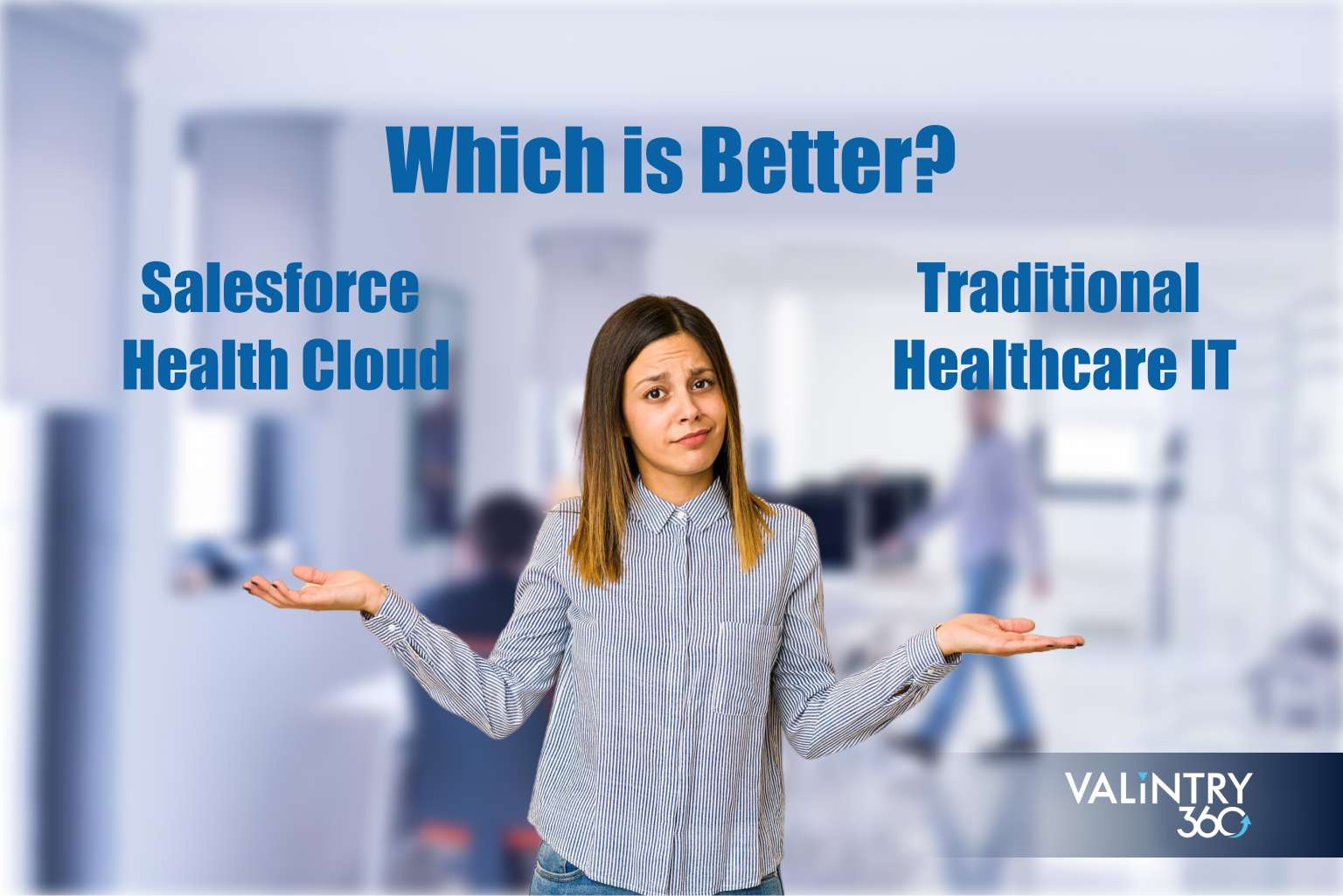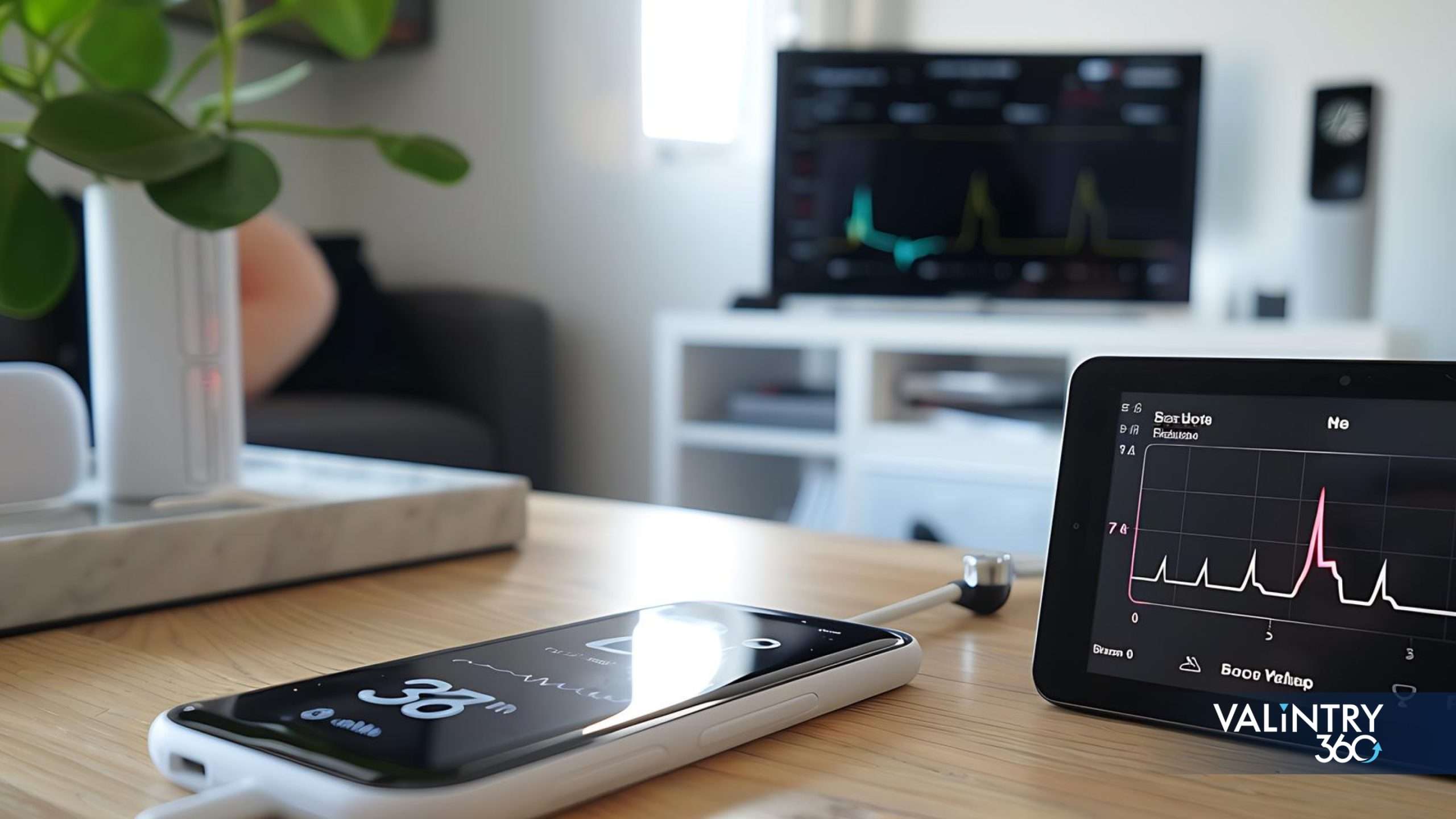
- Salesforce Health Cloud
In the evolving realm of healthcare technology, Salesforce Health Cloud and traditional healthcare IT systems are at the forefront of debate among industry experts. Traditional IT systems have long provided stability and familiarity in managing patient records, scheduling, and billing processes, deeply integrating into daily operations. In contrast, Salesforce Health Cloud leverages cloud-based technology and advanced analytics to centralize patient data, foster real-time collaboration among care teams, and enhance decision-making capabilities. Its flexibility and AI-driven automation offer tailored solutions that improve clinical outcomes. While traditional systems excel in stability and compliance, they often face challenges with interoperability and agility in adapting to evolving healthcare models. The choice between the two hinges on specific organizational needs and priorities in navigating the complexities of modern healthcare delivery.
However, the answer does not need to be either/or. Healthcare practices can effectively use both Salesforce Health Cloud and an EMR system together. EMRs handle clinical documentation and compliance, while Health Cloud integrates patient data across systems, enhances care coordination, and provides advanced analytics and automation. This coexistence optimizes workflows, supports comprehensive patient management, and meets modern healthcare demands efficiently.
Overview
So What Is Salesforce Health Cloud?

Salesforce Health Cloud goes beyond mere electronic medical records (EMR) with a unique cloud-based solution for the healthcare industry. It takes advantage of the powerful salesforce platform characterized by strong customer relationship management capabilities and creates it specifically meeting the needs of this sector of our economy.
- Connects with EHRs for a 360° view.
- Patient Outreach
- Enables care team collaboration.
- Targets patients for better care
- Customizable Workflows
- Comprehensive Reporting
- Enhanced Security Features
- Mobile Accessibility
- Telehealth Integration
- Population Health Management
- Help patients with self-service tools
The Promise of Salesforce Health Cloud
1. Improved Patient Outcomes: Patient-Centric Approach: Salesforce Health Cloud emphasizes a patient-centric model, prioritizing individual needs and preferences. This focus on patient engagement can significantly enhance patient satisfaction and outcomes
2. 360-Degree View of Patients: Health Cloud aggregates data from various sources, including EHRs, wearables, and patient interactions, to provide a comprehensive view of each patient. This holistic perspective enables healthcare providers to make well-informed decisions.
3. Scalability and Customization: Salesforce Health Cloud is highly scalable and customizable, allowing it to adapt to the specific needs of your organization. You can configure the platform to align with your unique workflows and processes.
4. Integration with Salesforce Ecosystem: If your organization already utilizes other Salesforce products, Health Cloud integrates seamlessly within the Salesforce ecosystem, enhancing data sharing and optimizing workflows.
5. Analytics and AI: Health Cloud leverages advanced analytics and AI capabilities to extract valuable insights from patient data, predict outcomes, and support data-driven decision-making.
So what are EHR Systems?

An Electronic Health Record (EHR) System serves as the digital repository for a patient’s complete medical history. It securely centralizes and organizes essential health data, accessible to authorized healthcare providers across different clinics, enhancing efficiency and care coordination.
- Medical history across different providers
- Diagnoses and treatment plans
- Medications and allergies
- Immunization records
- Lab test results, and imaging scans
The Case for Traditional EHR Systems
1. Familiarity and Compliance: Traditional EHR systems have been industry staples for years. Healthcare professionals are adept at using them, and they typically include built-in compliance features to meet regulatory standards.
2. Robust Clinical Data Management: EHR systems excel in managing clinical data, making them ideal for healthcare organizations that need a comprehensive system for patient records, lab results, and medication management.
3. Integration with Legacy Systems: For organizations with existing legacy systems, traditional EHRs may offer smoother integration due to their established presence in the healthcare industry.
4. Established Reliability: Traditional EHR systems have a proven track record in securely managing and storing sensitive patient data.
Making the Decision
When deciding between implementing Salesforce Health Cloud or an Electronic Medical Record (EMR) system for your practice, it’s essential to align the decision with the goals and needs of your healthcare organization. Both platforms offer distinct advantages: Health Cloud excels in facilitating collaboration, advanced analytics, and personalized patient engagement, while EMRs are crucial for comprehensive clinical documentation and regulatory compliance. While each product can provide a comprehensive solution to a healthcare institution by itself to help reduce cost the choice does not have to be exclusive.
Health Cloud and EMRs can complement each other effectively through integration. By integrating these platforms, practices can enhance data accessibility, streamline workflows, and improve overall operational efficiency. This integration not only augments the capabilities of each system but also maximizes the value delivered to healthcare providers and enhances the quality of patient care.
Ultimately, the decision should focus on how each platform contributes to achieving the practice’s strategic objectives while leveraging their combined strengths to meet modern healthcare demands effectively. Consider the following factors:
1. Patient-Centricity: If maximizing patient engagement and satisfaction is crucial, Health Cloud might be the preferable option.
2. Scalability and Customization: For organizations needing a highly customizable solution that can expand with growth, Health Cloud offers greater flexibility.
3. Integration Needs: Assess your current systems to determine which option integrates more seamlessly.
4. Functionality and Use Case: Evaluate which platform aligns better with your practice’s specific needs and workflows. Consider whether you need advanced analytics, patient engagement tools, or robust care coordination capabilities offered by Health Cloud, or if comprehensive clinical documentation and regulatory compliance provided by EMRs are more critical.
5. Cost and ROI: Evaluate the total cost of ownership, including initial implementation costs, ongoing maintenance, and potential return on investment (ROI). Consider factors such as reduced administrative overhead, improved operational efficiency, and enhanced patient outcomes when calculating ROI.
6. User Experience and Training: Assess the ease of use and user experience for healthcare providers and staff. Consider training requirements and user adoption challenges associated with each platform.
7. Data Security and Compliance: Ensure that the platform complies with healthcare data privacy regulations and meets your organization’s security requirements. Evaluate the platform’s data encryption, access controls, and compliance certifications.
8. Vendor Support and Reputation: Research the vendor’s reputation, customer support services, and track record in the healthcare industry. Reliable technical support and regular updates are crucial for maintaining system functionality and security.
9. Patient Engagement and Experience: Consider how each platform supports patient engagement initiatives and enhances the overall patient experience. Features such as patient portals, telehealth capabilities, and personalized communication tools can significantly impact patient satisfaction and loyalty.
All in all
When deciding between Salesforce Health Cloud and traditional EHR systems, the choice isn’t binary. Each option offers unique advantages and considerations, and the decision should align with your organization’s specific goals and priorities. It’s crucial to conduct a comprehensive evaluation of factors such as functionality, integration capabilities, scalability, and cost-effectiveness. Involving stakeholders in the decision-making process ensures that all perspectives are considered, and long-term implications are thoroughly assessed. Ultimately, whether opting for Health Cloud’s innovation or traditional EHRs’ familiarity, the overarching objective remains consistent: delivering superior healthcare services and outcomes for patients.
This journey towards a healthier future begins now. Connect with VALiNTRY360 today to learn how Salesforce Health Cloud can transform your healthcare organization so you can give incredible care.
Related Posts
- Salesforce Health Cloud
Optimizing Workflow Efficiency with Salesforce Health Cloud
Inefficiencies in healthcare practices, such as fragmented workflows, redundant tasks, and poor communication, impact patient care and increase costs. Addressing these issues requires integrated systems to streamline operations, reduce redundancies, and improve communication. Additionally, staff training and standardized processes promote…
- Salesforce Health Cloud
Salesforce Health Cloud: How to Improve Patient Engagement…
In a rapidly evolving healthcare landscape, patient engagement and outcomes are critical priorities for providers committed to delivering exceptional care. Salesforce Health Cloud emerges as a transformative solution designed to enhance these priorities through advanced technologies and patient-centric approaches. From…
- Salesforce Health Cloud
Integrating Salesforce Health Cloud with EHR Systems: Best…
Efficiency and patient engagement are critical to healthcare, as they ensure streamlined operations and improved patient outcomes. Relying solely on an EMR to manage the entire practice often falls short of meeting these needs, whereas utilizing multiple specialized systems can…

